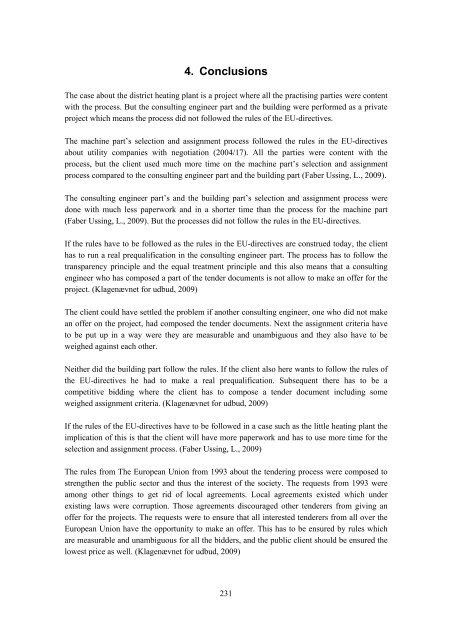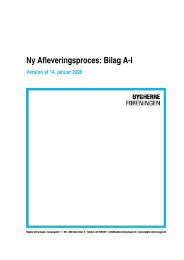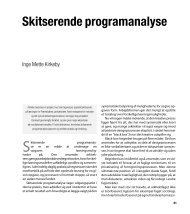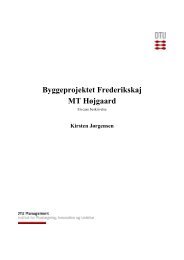Udvælgelses- dan og tildelingskriter ske byggesektor ... - RenProces
Udvælgelses- dan og tildelingskriter ske byggesektor ... - RenProces
Udvælgelses- dan og tildelingskriter ske byggesektor ... - RenProces
Create successful ePaper yourself
Turn your PDF publications into a flip-book with our unique Google optimized e-Paper software.
4. Conclusions<br />
The case about the district heating plant is a project where all the practising parties were content<br />
with the process. But the consulting engineer part and the building were performed as a private<br />
project which means the process did not followed the rules of the EU-directives.<br />
The machine part’s selection and assignment process followed the rules in the EU-directives<br />
about utility companies with negotiation (2004/17). All the parties were content with the<br />
process, but the client used much more time on the machine part’s selection and assignment<br />
process compared to the consulting engineer part and the building part (Faber Ussing, L., 2009).<br />
The consulting engineer part’s and the building part’s selection and assignment process were<br />
done with much less paperwork and in a shorter time than the process for the machine part<br />
(Faber Ussing, L., 2009). But the processes did not follow the rules in the EU-directives.<br />
If the rules have to be followed as the rules in the EU-directives are construed today, the client<br />
has to run a real prequalification in the consulting engineer part. The process has to follow the<br />
transparency principle and the equal treatment principle and this also means that a consulting<br />
engineer who has composed a part of the tender documents is not allow to make an offer for the<br />
project. (Klagenævnet for udbud, 2009)<br />
The client could have settled the problem if another consulting engineer, one who did not make<br />
an offer on the project, had composed the tender documents. Next the assignment criteria have<br />
to be put up in a way were they are measurable and unambiguous and they also have to be<br />
weighed against each other.<br />
Neither did the building part follow the rules. If the client also here wants to follow the rules of<br />
the EU-directives he had to make a real prequalification. Subsequent there has to be a<br />
competitive bidding where the client has to compose a tender document including some<br />
weighed assignment criteria. (Klagenævnet for udbud, 2009)<br />
If the rules of the EU-directives have to be followed in a case such as the little heating plant the<br />
implication of this is that the client will have more paperwork and has to use more time for the<br />
selection and assignment process. (Faber Ussing, L., 2009)<br />
The rules from The European Union from 1993 about the tendering process were composed to<br />
strengthen the public sector and thus the interest of the society. The requests from 1993 were<br />
among other things to get rid of local agreements. Local agreements existed which under<br />
existing laws were corruption. Those agreements discouraged other tenderers from giving an<br />
offer for the projects. The requests were to ensure that all interested tenderers from all over the<br />
European Union have the opportunity to make an offer. This has to be ensured by rules which<br />
are measurable and unambiguous for all the bidders, and the public client should be ensured the<br />
lowest price as well. (Klagenævnet for udbud, 2009)<br />
231










